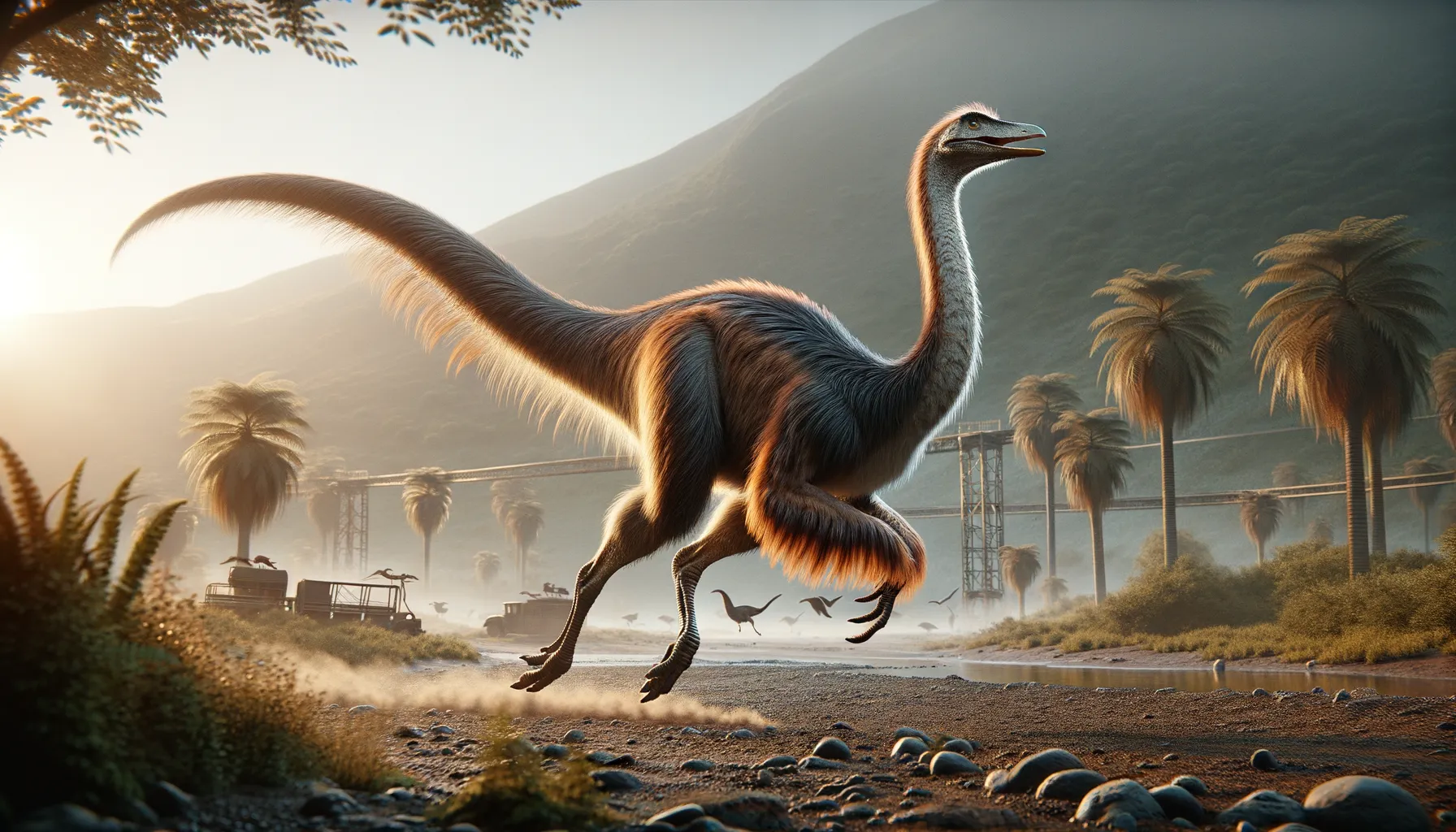
Dromiceiomimus
Swift runner of the prehistoric world
Period
Cretaceous
Length
Approximately 3.5 meters long.
Height
Around 1.5 meters tall at the hip.
Weight
Approximately 100 to 200 kg.
Dromiceiomimus was a swift and nimble dinosaur that roamed the Earth during the Late Cretaceous period. Known for its slender build and bird-like agility, it was a member of the ornithomimid family, which shared characteristics with modern ostriches. With its long legs and lightweight body, it excelled at running, making it an adept predator or scavenger. Its name means 'emu mimic', highlighting its resemblance to contemporary flightless birds.
Diet
Dromiceiomimus was likely omnivorous, feeding on a mix of plants, small animals, and insects. Its diet may have included seeds, leaves, and small vertebrates that it could catch or scavenge.
Hunting
This dinosaur likely relied on its speed and agility to catch prey or escape predators. It may have used its keen eyesight to locate food and picked off smaller, slower animals or scavenged for carrion.
Environmental challenges
Dromiceiomimus faced challenges such as harsh climatic conditions and competition for resources with other species. It needed to be constantly on the move to forage for food, particularly in times of scarcity. Predation by larger dinosaurs and natural disasters also posed significant threats.
Speed
It was a fast runner, possibly reaching speeds of up to 60 km/h.
Lifespan
It is estimated to have lived for about 10 to 20 years.
First discovery
Discovered in the late 19th century in Alberta, Canada.
Fun Facts
- Dromiceiomimus was a swift, ostrich-like dinosaur that roamed North America during the Late Cretaceous period.
- Its name means 'emu mimic' because it looked quite similar to modern-day emus in body shape and size.
- Dromiceiomimus likely had a feathered body, which would have helped it keep warm and possibly aided in display or camouflage.
- It was a fast runner, with long legs adapted for speed, and could potentially outrun many of its predators.
- Dromiceiomimus had large eyes, suggesting it might have had good eyesight, which would have been useful for spotting predators or finding food.
- It is thought to have been omnivorous, eating a variety of foods, including plants, small animals, and insects.
- Paleontologists believe that Dromiceiomimus traveled in groups, which could offer protection and better chances of finding food.
Growth and Development
As a young dinosaur, Dromiceiomimus would have grown rapidly, reaching maturity within a few years. Its development was marked by increased speed and agility, which aided in its survival as it transitioned from juvenile to adult. This growth pattern helped it evade predators while honing its hunting or foraging skills.
Habitat
Dromiceiomimus lived in a variety of environments, including open plains and forested areas. Its habitat was likely characterized by a mix of vegetation that provided both cover from predators and food resources. During its time, the landscape was rich with diverse flora and fauna, supporting a vibrant ecosystem.
Interaction with other species
Dromiceiomimus coexisted with other herbivorous and carnivorous dinosaurs, participating in a complex ecological web. It likely interacted with species by competing for food resources and possibly avoiding predation. Socially, it may have congregated in small groups or pairs, collaborating to find food and ward off threats.
Natural lifespan
Its natural lifespan likely spanned 10 to 20 years.
Reproduction
Dromiceiomimus likely reproduced by laying eggs in carefully prepared nests. This process would have involved selecting a safe location, possibly camouflaged or hidden, to protect its young from predators. Parental care might have been minimal once the eggs were laid.
Social behaviour
This dinosaur may have exhibited some social behaviors, possibly forming loose groups or family units. Such groupings could provide mutual protection against predators and assist in foraging efforts. While specific details are scarce, its social dynamics likely involved cooperation in various survival aspects.
Fossil locations
Fossils of Dromiceiomimus have been predominantly found in the Late Cretaceous deposits of Alberta, Canada. These discoveries have provided valuable insights into its morphology and lifestyle, helping paleontologists piece together its role in the ancient ecosystems. Other potential locations for fossils may include parts of the western United States, although evidence is less conclusive.
